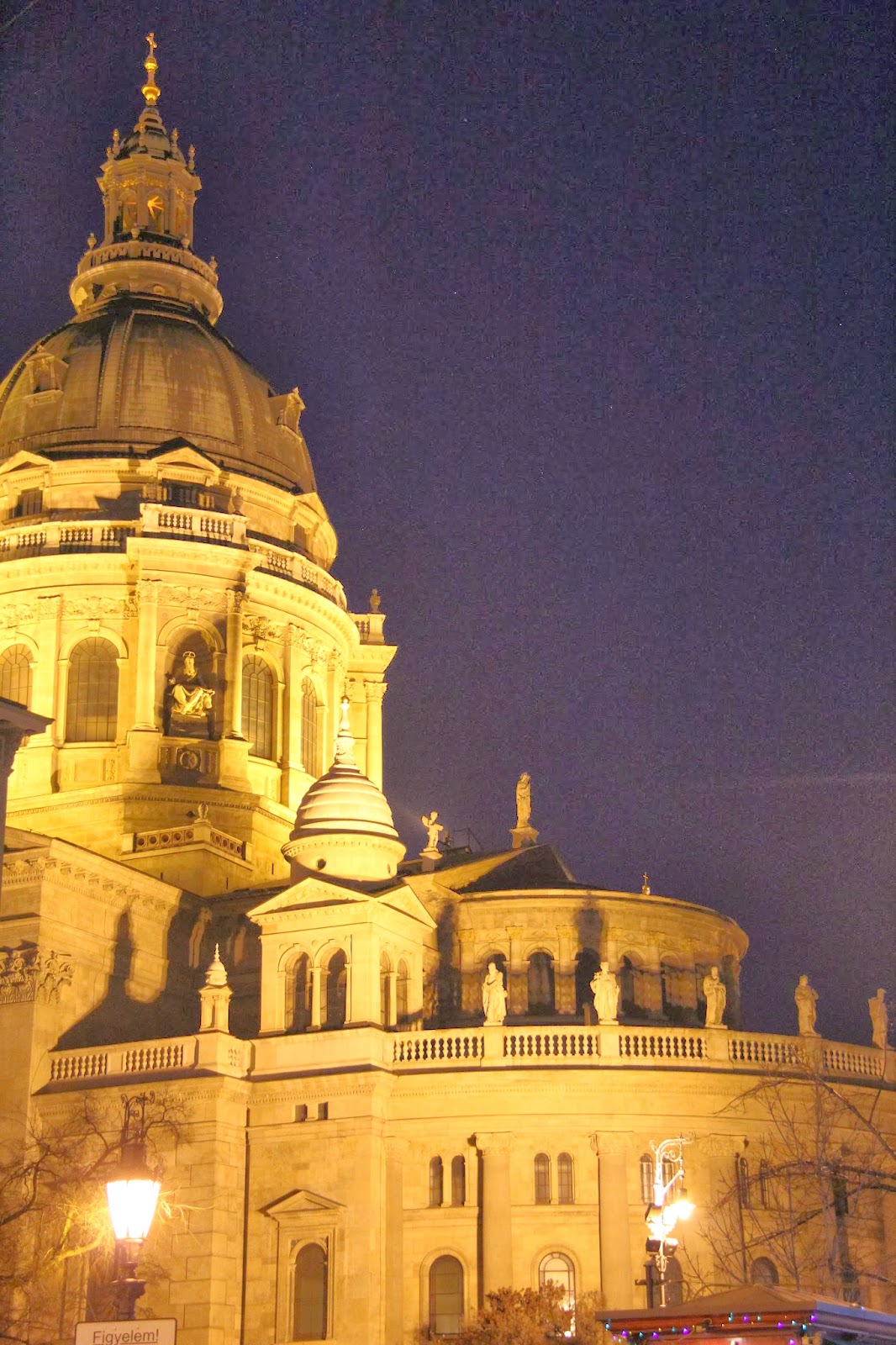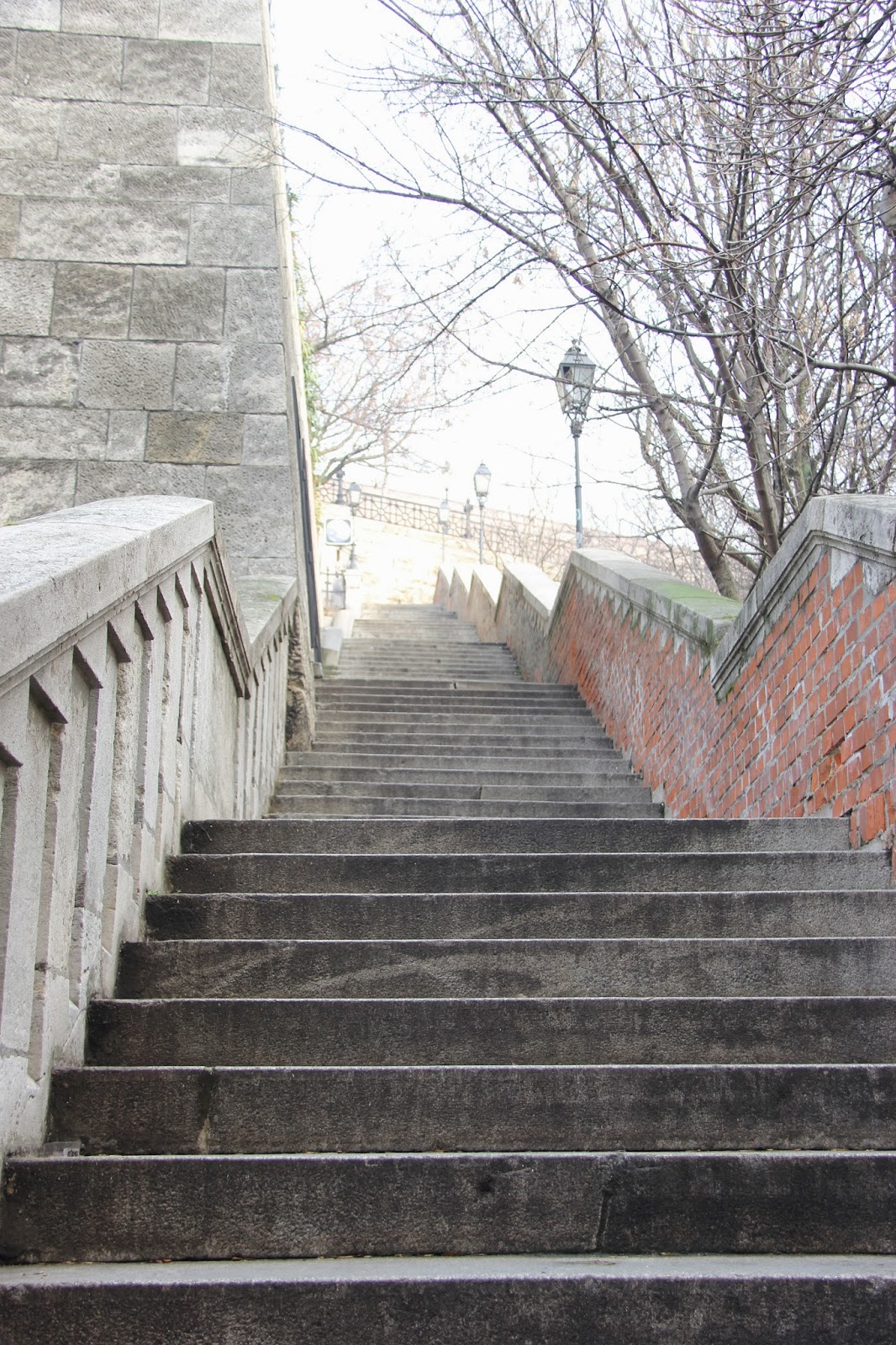Buda and Pest
Budapest was probably one of the best cities I have ever
gone to in my entire life. When I stepped off the plane I could definitely feel
that I had stepped off into Eastern Europe. The airport was an old airplane hangar
from WWII. Looking around at that moment and then seeing all the police in what
looked like swat gear outside the airport really made Eric and I ask what we
had gotten ourselves into. It turns out we got ourselves into one of the most
amazing cities in the world.
Budapest actually use to be two separate cities Buda and Pest. When
they were united to be the single capital of the territory it was called
Budapest. However on business cards and advertisements they say that they are
located on the Buda side or the Pest side. I really liked this.
St. Stephen’s Basilica (Szent Istvánbazilika)
A Roman
Catholic Basilica. It is named in honor of Stephen, the first king of Hungary
whose right hand is housed in the reliquary. It was the 6th largest
church building in Hungary before 1920. Today, it is the 3rd largest
church building in present day Hungary.
I loved the way that St. Stephen's looked. I also, loved that the back of the church was round. I guess I was just craving some religious sites that didn't look like Spanish Cathedrals.
Parliament (Orszaghaz)
the domed neo-Gothic structure was
inspired by the British House of Parliament and serves as both a vibrant government
center and a proud city landmark on the Pest side of the banks of the Danube River.
We walked out of a metro station and the first thing we saw was the Parliament building across the river. We couldn't believe how awe-striking it was. I find it to be one of the most impressive buildings that I have ever seen.
Buda Castle Hill
Buda Castle
This
palace has had five lives. Originally built in the 13th century, it
was reconstructed two hundred years later by King Matthias and then destroyed
by the Turks in 1686. Between 1714 and 1723 Hapsburg empress, Maria Theresa,
rebuilt it. Alas, it was damaged again during an unsuccessful 1849 attack by
revolutionaries. It rose again in 1905, but not for long. The communists turned
it into rubble in 1945 during a seven-week siege. Finally restored during the
1950’s, it is now a museum complex housing the Hungarian National Gallery, the
Széchenyi National Library and the Budapest History Museum.
All of Europe has lots of statues, but I really loved Budapest's statues more than any other place I have ever gone. This is because I love how much action is in them. It makes them more real and it actually makes me what to stop and look at them.
Buda Castle and all the other sights in Budapest are free of charge. Hungarians just want you to enjoy their culture and love it as much as they do. I think this is the way it should be. Everyone should be able to learn about other cultures and histories.
A Christmas Market in one of the Buda Neighborhoods
We enjoyed some nice Glühwein and watched the locals.
This is just a random church right by our hostel that I thought was so adorable. I loved that it was yellow and it felt just so small and spiritual.
Matthias Church (Mátyás-templom)
Perched on the highest
point of Castle Hill, the Mathias Church (Buda Church of our Lady) was
originally a 13th century Gothic chapel. The steeple was added in
the 15th century. During Turkish occupation from 1541 until 1686,
the church became the city’s main mosque. Legend has it that during the siege
of Buda in 1686, a wall in the mosque collapsed revealing a Gothic sculpture of
the Virgin Mary. It frightened the Turks so much that morale collapsed and the city
reverted back to the Hungarians. The stature still stands at the door of the
church that faces the river. A reddish-brown mosaic roof crowns the dusty-white
and intricate stonework of the house of worship. Its massive Szentáromság
Kápolna (trinity Chapel) is the site of royal ceremonies and contains the
burial crowns, rings, cross and scepters from former royalty. According to church
tradition it was originally built in Romanesque style in 1015. The current
building was constructed in the late Gothic style in the second half of
the 14th century and was extensively restored in the late 19th
century. It was the 2nd largest church of medieval Buda and the 7th
largest church of medieval Hungarian Kingdom.
This was not really like any other church I had ever seen. I loved the colors of the roof.

Statue of St. Stephen (Szent István király szobra)
Sitting
on a high pedestal, the huge, bronze statue of a man sitting on horseback,
carrying a cross and wearing a halo is St. Stephen. St. Stephen is credited
with bringing Christianity to Hungary, increasing Hungary’s territory and
establishing the first kingdom of Hungary reigning form 1001-1038. The
sculpture was created by Alajos Stróbl and unveiled in 1906.
Fisherman’s Bastion (Halázbástya)
Once part of the castle
walls, this Neo-Romanewque terrace once served as a fish market during Medieval
times, but the structure itself was built between 1895 and 1902 by tradesman.
The bastion was manned by Buda fishermen to protect the complex. It was designed
and built between 1895 and 1902 on the plans of Frigyes Schulek. Between
1947-48, the son of Schulek, János Schulek, conducted the other restoration
project after its near destruction during WWII.
The structure was beautiful and the views were lovely. It just blew my mind that all of these amazing parts of history were free.
I don't actually know what this statue is, but I really liked it. I know I shouldn't have been surprised, but I was very surprised at how religious Budapest was. I didn't really think of it as being so religious before I got there, but then again I didn't really know anything about Budapest let alone Hungry before I got there.
A shot of Fisherman's Bastion and Matthias Church from the Pest side of the River.
They got all decked out for Christmas. Even their cable cars had lights on them.
The Széchenyi Chain Bridge (Lánchid)
A suspension bridge
that spans the River Danube between Buda and Pest, the western and eastern
sides of Budapest. It was the first permanent bridge across the Danube in
Budapest, and was opened in 1849. The bridge has the name of István Szécheni, a
major supporter of its construction, but it is most commonly known
as the Chain Bridge. At the time of its construction, it was regarded as one of
the modern world’s engineering wonders. It has asserted an enormous significance
in the country’s economic, social and cultural life, much as the Brooklyn
Bridge has in NY. It’s decorations made of cast iron, and its construction,
radiating calm dignity and balance have elevated the Chain Bridge to a high
stature in Europe. It became a symbol of advancement, national awakening, and
the linkage between East and West.
Picture from the Buda Side
Pictures from the Pest Side
Buda Castle behind the Chain Bridge
I am so extremely glad that I went to Budapest. It was one of the most rewarding experiences I think I have ever had by visiting a city. The people were so fantastic and the culture is just so rich. The city is one of the most beautiful cities I have ever had the privilege and I really believe one day Budapest will be a leading city. This is, I feel, the most underrated places in the world. And I would love to go back some day.










































No comments:
Post a Comment